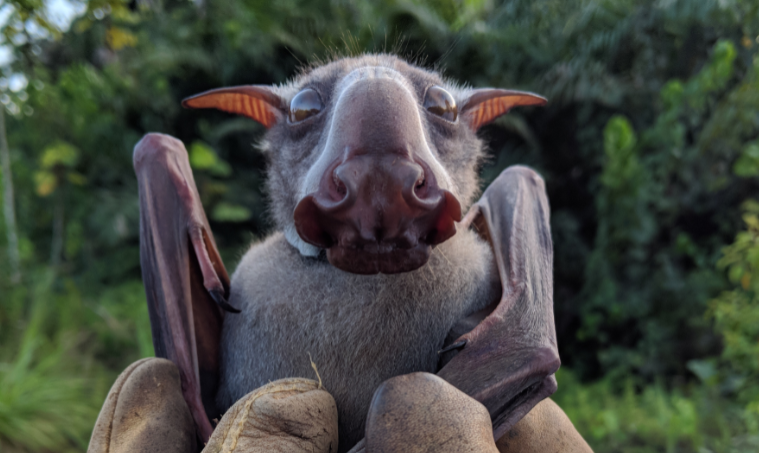If you think all bats are bloodsucking vampires or eerie creatures from scary movies, you should meet the hammerhead bat. These truly unique and fascinating species are as remarkable as it is misunderstood.
Commonly known as the hammer-headed fruit bat or big-lipped bat, this African megabat, scientifically named Hypsignathus monstrosus, boasts an appearance that is straight out of nightmares.

Africa's Largest Bat
While the African continent is home to a rich variety of wildlife, the hammerhead bat stands out as the largest bat in Africa.
Males, in particular, are significantly larger than their female counterparts, with a mass ranging from 228 to 450 grams, averaging 377 grams.
Their size does not stop at weight; these males can reach a length of 280 millimeters, with an average of 250 millimeters. Their wingspan is equally impressive, spanning between 686 and 970 millimeters.
Sexual Dimorphism and Unique Features
Animaldiversity.org tells us that one of the most striking features of the hammerhead bat is its pronounced sexual dimorphism. Males exhibit an enlarged rostrum (snout), a large square head, drooping lips, and distinctive chin and cheek pouches.
These characteristics give them a peculiar appearance that some might describe as "ugly," which may explain their species name, "monstrous."
Blessing the timeline with a hammer-headed bat. You are welcome. pic.twitter.com/u2EHH0opiW
— the devil's cormorant🌹 (@VeganRachel) October 17, 2020
Females also have a square-shaped head but lack the exaggerated facial features of the males.
Diverse Habitat and Mixed Groups
These intriguing bats are predominantly found in the tropical forests of central Africa, where they reign supreme as the largest bat species on the continent.
They are adaptable when it comes to their habitat, seeking shelter in lowland moist forests, along riverbanks, and even amid swamps and mangroves, roosting high in the trees.
These bats prefer to roost in mixed groups, forming cozy quartets or bustling gatherings of up to twenty-five.
Foraging Strategies
When it comes to foraging, the males and females of this species have differing strategies. While females tend to stick to familiar routes with reliable but potentially lower-quality food sources, adventurous males embrace the thrill of the unknown.
They can venture up to six miles in search of the finest food patches, often sampling their preferred fruits on the spot before transporting their prized finds to a secluded location for a peaceful feast - and yes, they do not thirst for human blood.
Intricate Courtship Displays
Come the breeding season, the skies resonate with the peculiar calls of the male hammerhead bats as they engage in elaborate courtship displays, hoping to entice discerning females.
This mesmerizing dance of attraction, known as lekking, showcases these long-nosed males at their most passionate.
IFLScience tells us that their vocalizations are described as a "staccato buzz" - a loud, rapid buzzing sound essential for mating success.
The Role of Hammerhead Bats in Ecology
Beyond their unique appearances and intriguing behaviors, hammerhead bats play a crucial role in their ecosystems.
Sarah Olson, an associate director of wildlife health at the Wildlife Conservation Society, explains that these bats are "flying seed dispersal machines."
Males, which can weigh around one pound, are critical to the health of equatorial forests. They help disperse seeds, promoting forest growth and biodiversity.
Stay posted here at Tech Times.
Related Article : Unlocking Bat Genes' Secrets: Study Reveals Insights on How This Mammal Don't Get COVID, Cancer

ⓒ 2025 TECHTIMES.com All rights reserved. Do not reproduce without permission.




